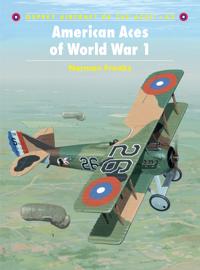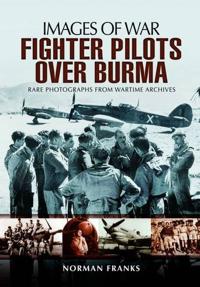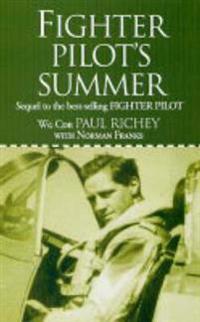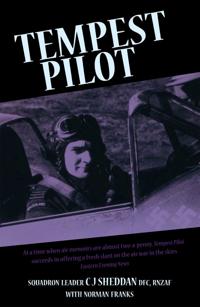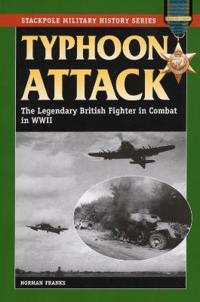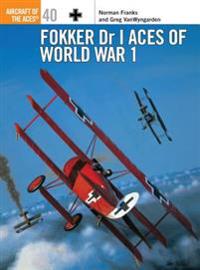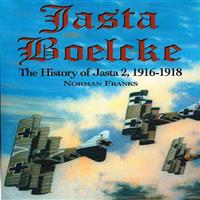American Aces of World War I (Pocket)
avNorman Franks, Harry (ILT) Dempsey, Norman Franks
ISBN: 9781841763750 - UTGIVEN: 2001-09American fliers arriving in Europe from September 1971 brought with them no aircraft. Instead, US units had to obtain machines mainly from the British and French. From early 1918 American pilots were issued with SPAD fighters and they never looked back. As this volume details, the first American tra[...]
RAF Fighter Pilots over Burma (Pocket)
avNorman Franks
ISBN: 9781783376148 - UTGIVEN: 2014-04It is a recognized fact that, had the war gone badly for the Allies on the India/Burma front, and had the Japanese succeeded in invading the Indian Continent, the outcome of the war would have been entirely different. Yet despite this, the campaign on the Burma front is offered surprisingly scant co[...]
Fighter Pilot's Summer: Sequal to the Best-Selling Fighter Pilot (Häftad)
avPaul Richey, Norman Franks, Wg Cdr Paul Richey
ISBN: 9781904010623 - UTGIVEN: 2004-08Unknown to almost everyone Paul Richey started this sequel to his acclaimed book Fighter Pilot in 1941, but was unable to continue it beyond the initial chapters. Now, aviation author and historian Norman Franks, by gaining exclusive access to Paul's papers and diaries, has completed the work. Riche[...]
Under the Guns of the Red Baron (Pocket)
avNorman Franks, Hal Giblin, Nigel McCrery
ISBN: 9781904943976 - UTGIVEN: 2007-09In the autumn of 2007, ninety years after this legendary fighter fell to earth, there will be a full length feature film released in the UK and Germany simply entitled "The Red Baron", with Joseph Fiennes in the lead role. Manfred Freiherr von Richthofen was the most feared and celebrated of all Ger[...]
Tempest Pilot (Pocket)
avC. J. Sheddan, Norman Franks, C. J. Sheddan
ISBN: 9781906502959 - UTGIVEN: 201106Jimmy Sheddan was one of the many New Zealanders who joined the RNZAF, then left his native land to come to England to fight the enemies of Great Britain and her Empire during World War Two. Through his recollections we can share some of the trials and wartime tribulations they faced. Yet we can rea[...]
Typhoon Attack (Häftad)
avNorman L. R. Franks
ISBN: 9780811706438 - UTGIVEN: 201006The rocket-firing Typhoon fighter played a pivotal role in the Allies' success in the air and on the ground in World War II, from the Normandy beachhead to the Battle of the Bulge and the final struggle for Germany. In this lively, dramatic account of aerial combat, Norman Franks describes what it w[...]
Fokker Dr 1 Aces of World War I (Häftad)
avNorman L. R. Franks
ISBN: 9781841762234 - UTGIVEN: 200108Undoubtedly the most famous fighter type to see service on either side during World War I, the Fokker Dr I was a revelation when it entered service on the western front in 1917. Manfred von Richthofen's JG I 'circus' was the first Jasta to completely re-equip with the new fighter, and in the skilled[...]
Fokker D VII Aces of World War I (Häftad)
avNorman L. R. Franks, Greg Van Wyngarden
ISBN: 9781841765334 - UTGIVEN: 2003-03Designed in a great rush at the end of 1917 just in time to take part in the German standard fighter competition held in January/February 1918, the D VII easily walked away with first prize. As Germanys premier fighter unit, von Richthofens JG I (led by Hermann Goring in the wake of the 'Red Baron's[...]
Fokker D VII Aces of World War I (Häftad)
avNorman L. R. Franks, Greg VanWyngarden
ISBN: 9781841767291 - UTGIVEN: 2004-06Befitting its status as Germany's premier fighter unit, von Richthofen's JG I (led by Hermann Goring in the wake of the 'Red Baron's recent death) received the first examples of the D VII to reach the frontline in late April. Built to oppose the new generation of French SPAD XIIIs and British SE 5as[...]
Albatros Aces of World War 1 (Pocket)
avFranks, Norman
ISBN: 9781855329607 - UTGIVEN: 2000-04-17The Albatros family of fighters were amongst the most effective aircraft employed by the Idlfieg (Imperial German Air Service) for much of World War 1, with the D.III and D.Va being flown by most of the 363 pilots who qualified as aces at some point in their often brief careers. The Albatros was the[...]
Jasta Boelcke (Inbunden)
avNorman L. R. Franks
ISBN: 9781904010760 - UTGIVEN: 2004-04As August 1916 drew to a close, the German Air Service was spiralling almost helplessly towards defeat on the Somme. The Artillery and Feldflieger Abteilungen, the Kampfstaffeln, had been quickly reduced to relative impotency by the overwhelming quantitative and qualitative superiority of the Allies[...]

